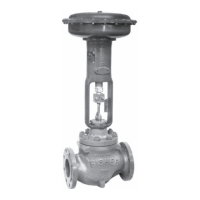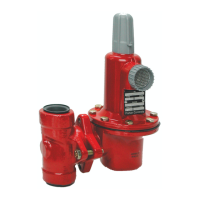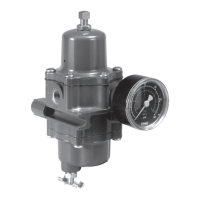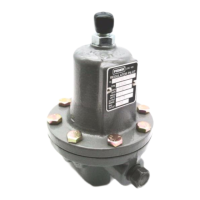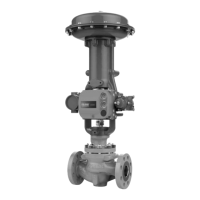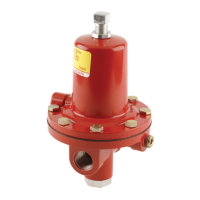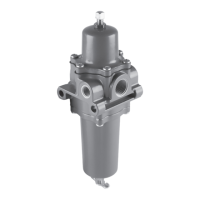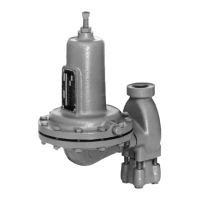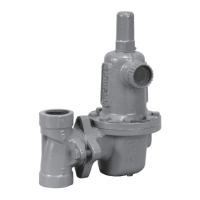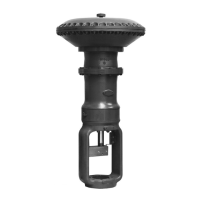Instruction Manual
D100304X012
656 Actuator
June 2017
6
Note
Do not use lubricant on these bolts and nuts. Fasteners must be clean and dry.
a. The first four bolts tightened should be diametrically opposed and 90 degrees apart. Tighten these four bolts to
13 NSm (10 lbfSft).
b. Tighten the remaining bolts in a clockwise, criss‐cross pattern to 13 NSm (10 lbfSft).
c. Repeat this procedure by tightening four bolts, diametrically opposed and 90 degrees apart, to a torque of 27
NSm (20 lbfSft).
d. Tighten the remaining bolts in a clockwise, criss‐cross pattern to 27 NSm (20 lbfSft).
e. After the last bolt is tightened to 27 NSm (20 lbfSft), all of the bolts should be tightened again to 27 NSm (20
lbfSft) in a circular pattern around the bolt circle. Once completed, no more tightening is recommended.
8. If the actuator has been removed from its mounting, position it on its mounting plate or bracket, and secure with
cap screws.
9. Attach the pressure pipe or tubing to the loading pressure connection on top of the upper diaphragm case.
10. Attach the actuator stem to the stem connector or clevis and adjust the travel by using the appropriate procedure
below.
D For Push‐Down‐to‐Open applications:
1. Set the controlled element (valve plug, louver, damper, etc.) in the closed position.
2. Turn the lower bearing seat (key 14) up toward the spring case far enough to ensure that the actuator stem is at the
top of its stroke.
3. Make the actuator stem connection, making sure that there is full engagement of the actuator stem threads.
Tighten slightly.
4. Apply loading pressure to the diaphragm case to move the controlled element toward its wide open position. Screw
the controlled element linkage into the actuator stem connection far enough to move the controlled element
toward its closed position 3.2 mm (1/8 inch), and tighten the stem connection securely. This adjustment ensures
that the controlled element will close before the actuator stem travels to the top of its stroke. The travel stops (key
7) in the lower diaphragm case ensure correct travel of the controlled element in the open direction.
5. If travel starts at a lower or higher pressure than is required for proper operation, turn the lower bearing seat (key
14) up or down respectively, as described in the Adjustment section.
D For Push‐Down‐to‐Close applications:
1. Set the controlled element (valve plug, louver, damper, etc.) in the open position.
2. Turn the lower bearing seat (key 14) up toward the spring case far enough to ensure that the actuator stem is at the
top of its stroke.
3. Tighten the actuator stem connection slightly, making sure that there is full engagement of the actuator stem
threads.
4. Apply loading pressure to the diaphragm case and observe the travel of the controlled element to make sure that it
closes completely. If the travel is not correct, it can be changed by screwing the controlled element linkage in or out
of the stem connection. When the travel is set correctly, tighten the stem connection securely, and lock the jam
nuts (key 23).
5. If travel starts at a lower or higher pressure than is required for proper operation, turn the lower bearing seat in or
out respectively, as described in the Adjustment section.
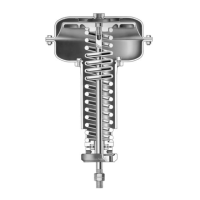
